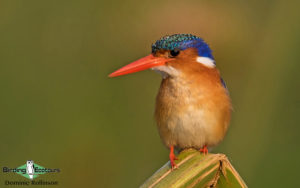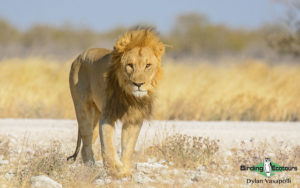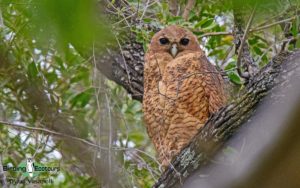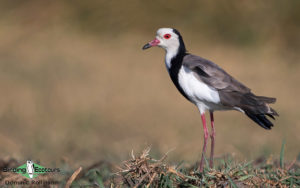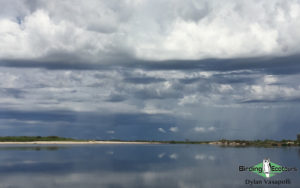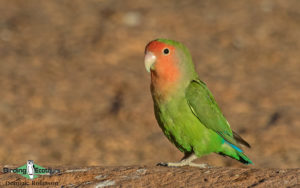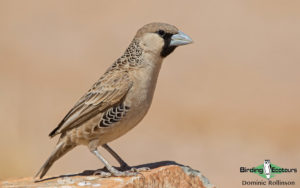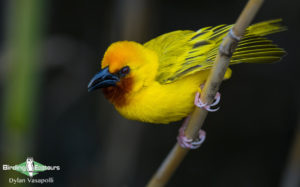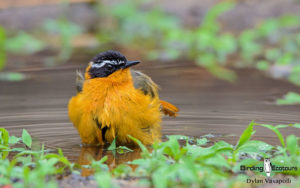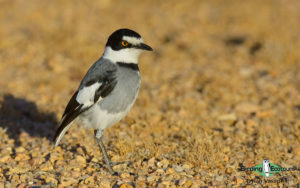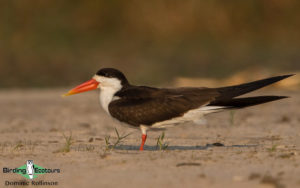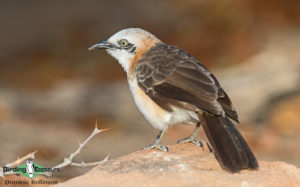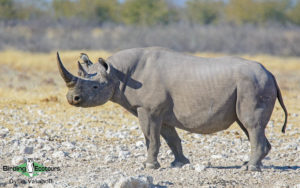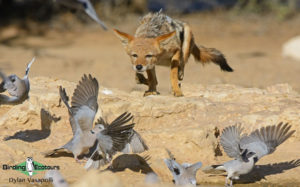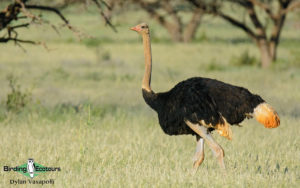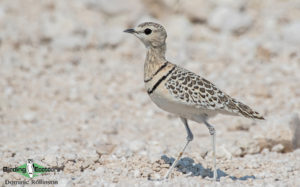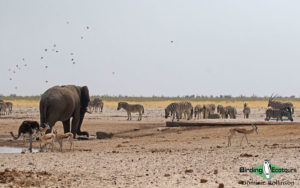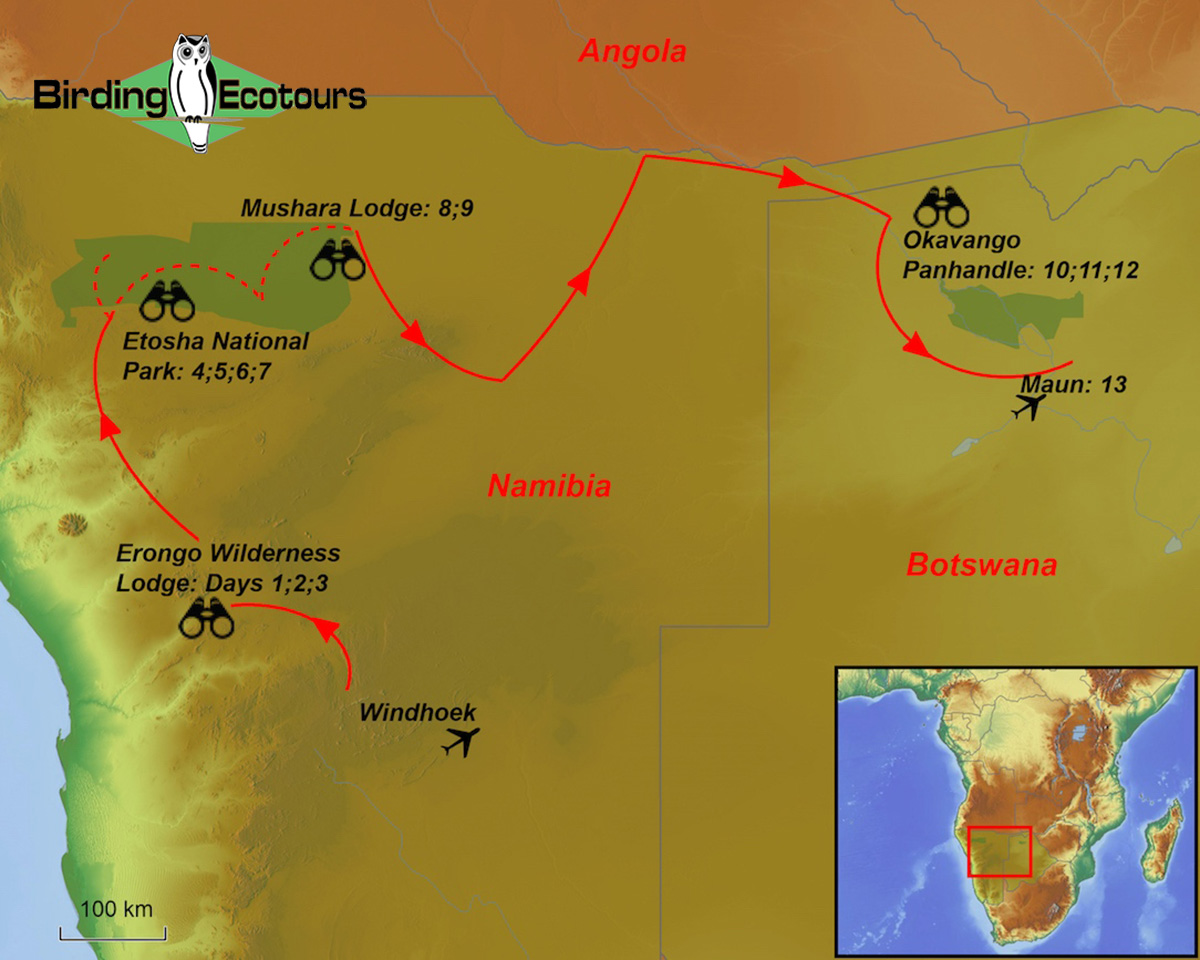Namibia and Botswana Birding and Photo Tour - From Desert to Delta
Go to: Namibia Birding Tours | Botswana Birding Tours | Birding Tours in Africa | Photographic Tours | All our birding tours
Namibia and Botswana Birding and Photo Tour – From Desert to Delta
September 2025/2026
This is a photographic birding tour that gives you time in some of Africa’s greatest (no exaggeration!) wildlife havens. We begin the trip with three days in the rugged Erongo Mountains where, at the magical lodge we use, some localized and striking birds can be seen and photographed, truly up-close and personal, among the amazing rock formations. The middle part of the tour finds us in one of the continent’s finest game parks, Etosha. Here Lion and other big cats, African Elephant, rhino, Giraffe, and a plethora of other big and small mammals roam freely among some spectacular birds, such as Crimson-breasted Shrike, Secretarybird, Kori Bustard, various owls (some of them at their daytime roosts), and many others. Floodlit waterholes at the park’s camps provide awesome and rather easy photographic opportunities. Finally, we bird the panhandle of the Okavango Delta in Botswana – this inland delta is of course world-famous and needs no introduction. All in all, this tour is less than two weeks, and gives you an African dream experience, all the while allowing ample time for photography.
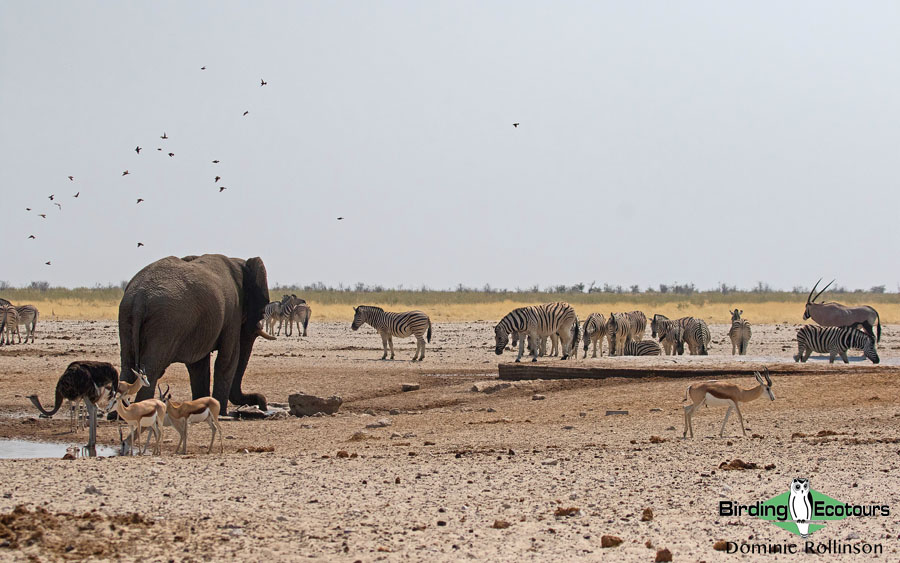
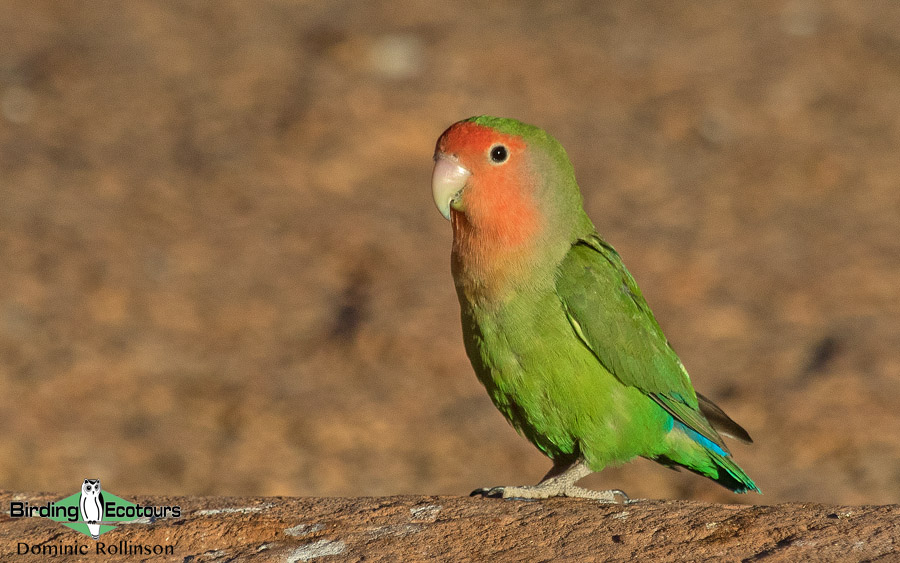
Itinerary (13 days/12 nights)
Days 1 – 3. Erongo Mountains
After our international flight arrives in Windhoek, we head west for the Erongo Mountains (three hours’ drive with no stops) on the edge of the Namib Desert. At our comfortable lodge, where we spend three nights, noisy flocks of Rosy-faced Lovebird are commonly encountered, with small coveys of the localized, bizarre and highly secretive Hartlaub’s Spurfowl occurring nearby. A host of other exciting and colorful birds may also be encountered around the lodge grounds, providing for some great photographic opportunities. The fabulous White-tailed Shrike is common in the general area too. This species – like several of the birds here in the Erongo Mountains – is restricted to northern Namibia and southern Angola. Cape Porcupine is also sometimes seen on night drives in the area. Other mammals, such as Greater Kudu and Kirk’s Dik-dik, are fairly common in the bushier landscape. The secretive but striking Kaokoveld Slender Mongoose often gives fleeting views (if seen at all!), and rarely poses long enough for photographs. At dusk Freckled Nightjar usually appears and makes its dog-like “bow-wow” call. A morning walk usually easily generates Rockrunner, another strikingly marked, characterful, and localized bird. A drive from the lodge to nearby dry riverbeds lined with tall Camel Thorn trees can be good for Rüppell’s Parrot and Violet Wood Hoopoe. Time-permitting, a walk to some nearby caves with stone-age rock paintings is worthwhile.
Overnight: Ai-Aiba – The Rock Painting Lodge, Omaruru
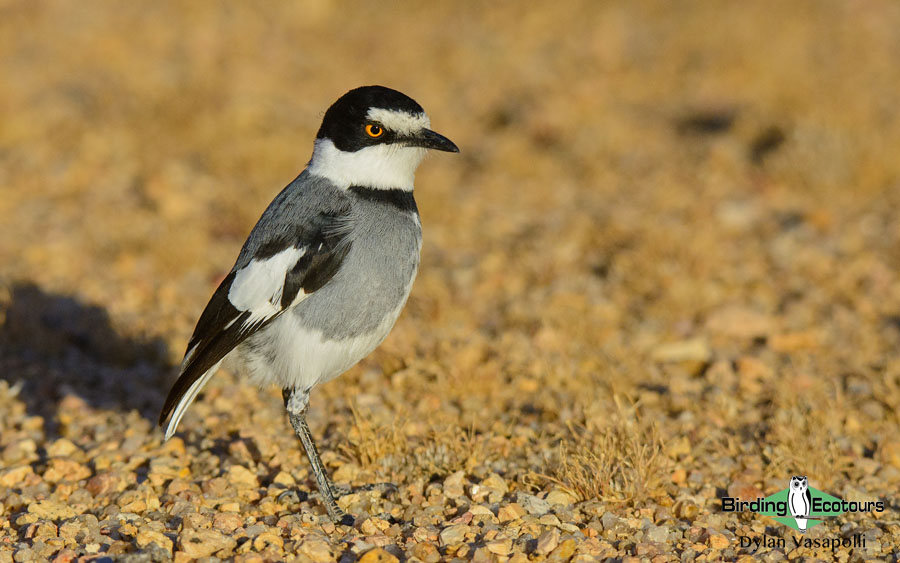
Days 4 – 5. Etosha National Park
We have a half day’s drive to Etosha National Park, where we spend two nights at Okaukuejo Camp in comfortable chalets. The floodlit waterhole here must be one of the world’s best places to see the rare Black Rhinoceros. Loads of other animals and birds come here to drink day and night, including African Elephant, Plains Zebra, Springbok, Double-banded Sandgrouse, and a host of others. Verreaux’s Eagle-Owl, Western Barn Owl, Grey-hooded Kingfisher, Crimson-breasted Shrike (Namibia’s absolutely brilliantly colored national bird), and Sociable Weaver (with its humungous nests) also frequent the camp. Venturing out of the camp in our vehicle (due to the presence of dangerous animals, it is illegal to alight from the vehicle) on birding/game drives, we will look for Pygmy Falcon, larks, Double-banded Courser, Secretarybird, Ant-eating Chat, Lion, Cheetah (this cat is rare, but Etosha provides a fair chance at it), and a host of others.
Overnight: Okaukuejo Camp, Etosha National Park
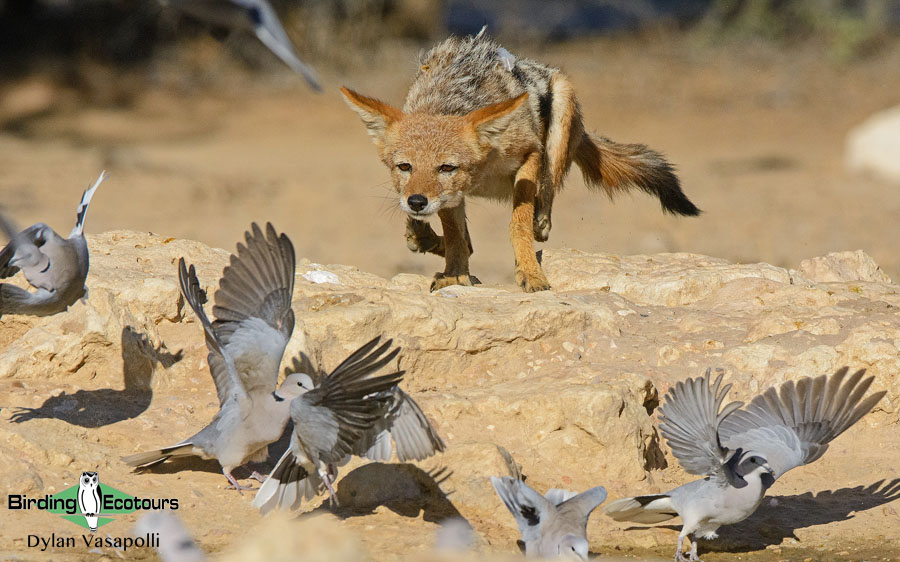
Days 6 – 7. Etosha National Park
After some final wildlife photography at Okaukuejo we head into the heart of Etosha and spend two nights at Halali Camp – which is in a completely different habitat (mopane woodland, instead of open plains and savanna). The floodlit waterhole at this camp is at least as good as the one at Okaukuejo; in fact it provides a better chance at Leopard (especially if you are willing to spend hours there at night with a bottle of wine – it can be a tough life in Africa!). We sometimes find a number of different owl species at Halali – Southern White-faced Owl, African Scops Owl, and Western Barn Owl at their daytime roosts, in addition to Pearl-spotted Owlet – this is a pygmy owl species that is active both day and night. Honey Badger is known to lurk around the camp at night.
Overnight: Halali Camp, Etosha National Park
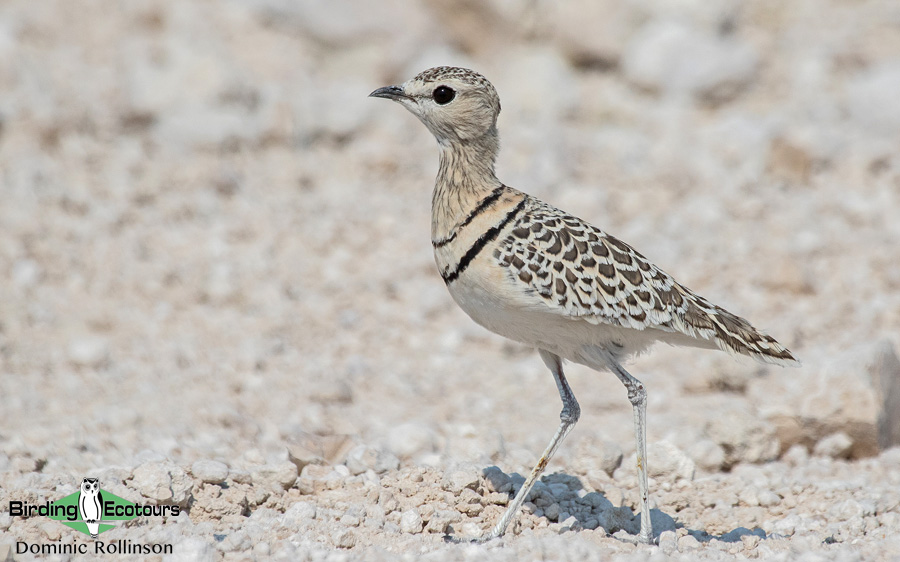
Days 8 – 9. Etosha National Park
We spend our last two Namibian nights (before proceeding to Botswana) at Mushara Lodge on the far eastern side of Etosha just outside the park. Once again, the eastern side of Etosha presents a very different habitat compared to the two camps we will have been to. Gangs of Banded Mongooses are very tame around here, and this gregarious, gorgeously cute, and well-marked animal provides much entertainment and seems to love being photographed. Many Acacia birds are found in this area, and with luck we might even see Red-necked Falcon. A drive to the interesting plains to the north of the camp often generates beautiful Blue Crane (near-endemic to South Africa except for an isolated population here in Etosha), Eastern Clapper Lark, herds of game, and much more. An extension of the massive Etosha Pan or “the Great White Place” itself, Fischer’s Pan, sometimes holds large amounts of water, unlike most of the rest of this ancient “wetland” (now dry in modern times!).
Overnight: Mushara Lodge, Tsumeb
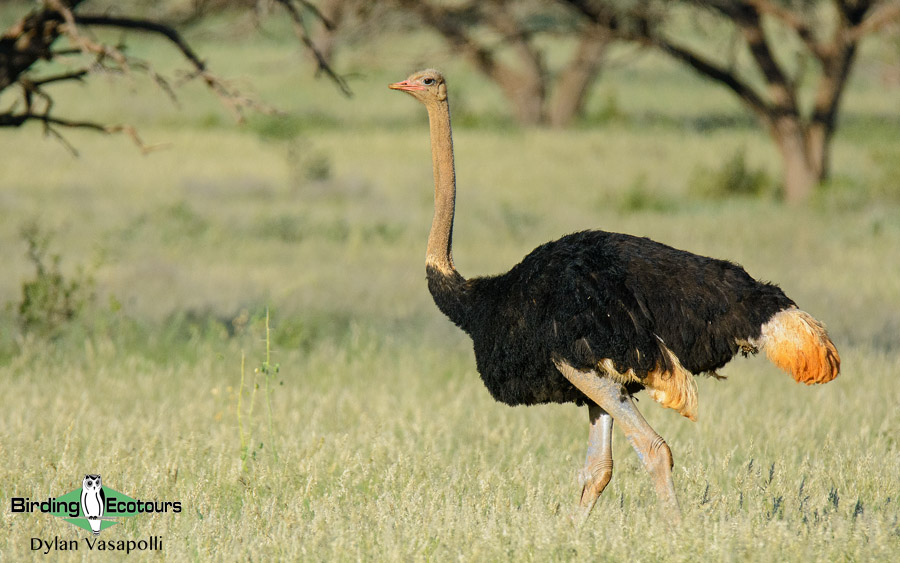
Days 10 – 12. Okavango Panhandle
We have a long drive (at least half a day) to the Okavango. We head northeast from eastern Etosha, eventually reaching more tropical areas, soon finding ourselves in Namibia’s Caprivi Strip. Eventually we meet the Kavango River, which we then follow southward into Botswana. Here in Botswana this large river spreads out into the panhandle of the incredible Okavango Delta – eventually the thirsty Kalahari sands absorb the entire river, preventing it from ever getting to the sea. The Okavango Delta is a humongous oasis, consisting of papyrus-lined channels, riverine forest-covered islands, and quiet backwaters. Nile Crocodiles and Hippopotamuses are common in these swamps, as are a plethora of herons (including some quite rare ones, such as White-backed Night Heron, Rufous-bellied Heron, the very localized Slaty Egret, etc.), and kingfishers (from the minute Malachite Kingfisher to the huge Giant Kingfisher – and everything in between). Several different bee-eaters add an awesome splash of almost unbelievable rainbow colors, and one of the most remarkable sights is arguably the most spectacular species, Southern Carmine Bee-eater, breeding on sandbanks along the river. Many of these birds mentioned can be approached very closely by boat – which is how we spend much of our time birding here in the delta. One of the great prizes of the Okavango is Pel’s Fishing Owl, which we usually find without many problems, along with African Wood Owl and African Barred Owlet. Brown Firefinch, African Pygmy Goose, various hornbills, and a rich diversity of other birds will also be sought here.
Overnight: Xaro Lodge or Drotsky’s Cabins, Shakawe
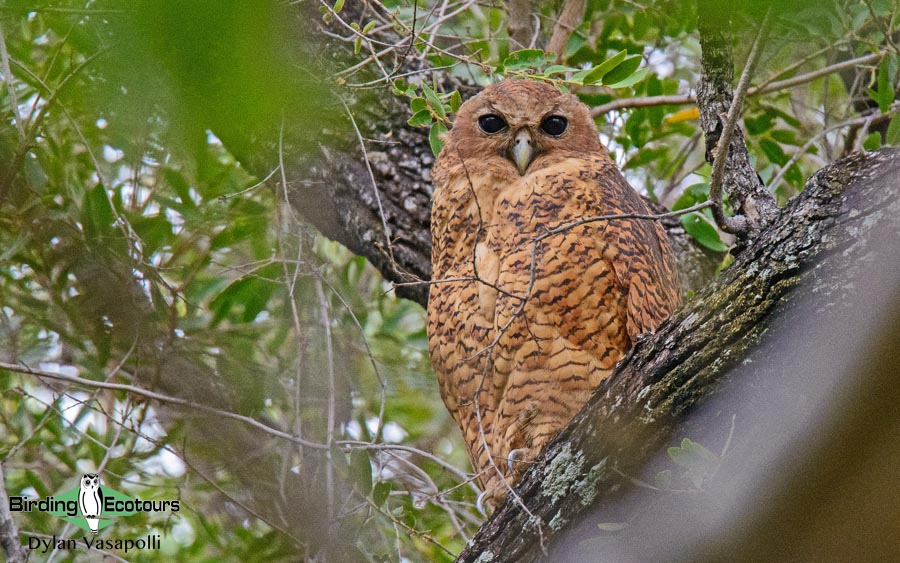
Day 13. Departure
We have a four-hour-long drive to Maun for our flights home.
Alternatively, you can continue onwards to South Africa, where our Western Cape and Kruger Birding and Photo Tour follows, directly after this tour.
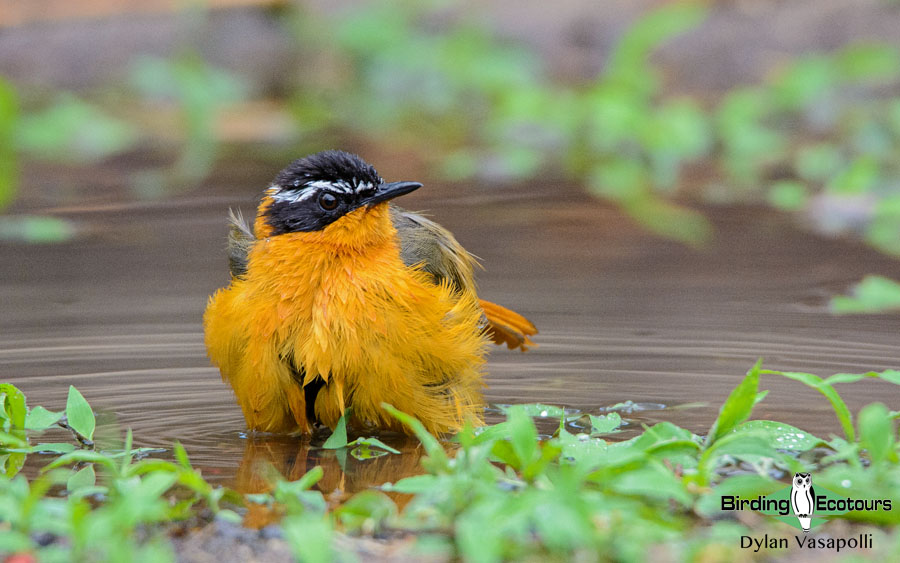
Please note that the itinerary cannot be guaranteed as it is only a rough guide and can be changed (usually slightly) due to factors such as availability of accommodation, updated information on the state of accommodation, roads, or birding sites, the discretion of the guides and other factors. In addition, we sometimes have to use a different international guide from the one advertised due to tour scheduling.
Download ItineraryNamibia and Okavango Photographic trip report March 2015
This is a sample trip report. Please email us ([email protected]) for more trip reports from this destination.
